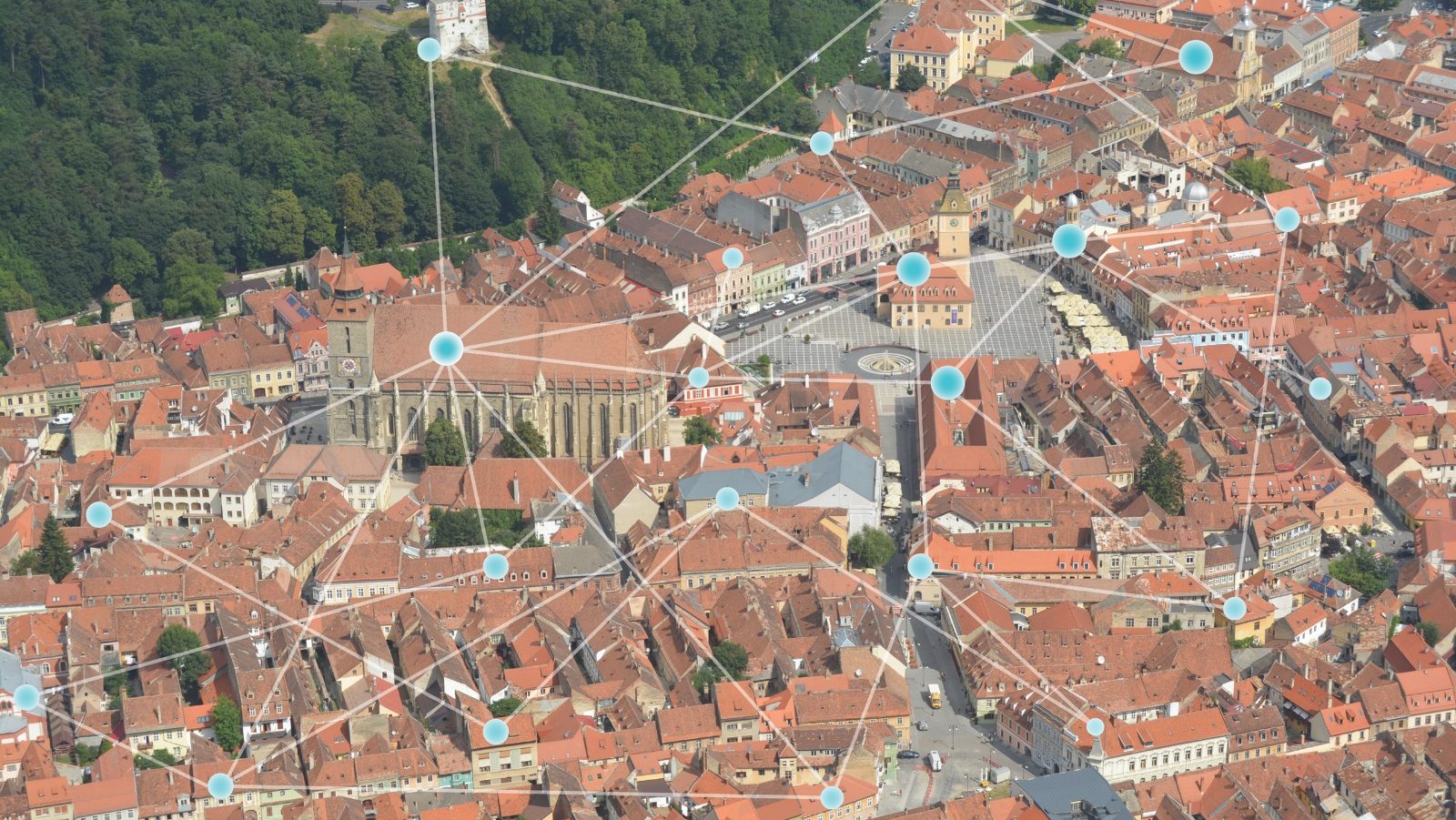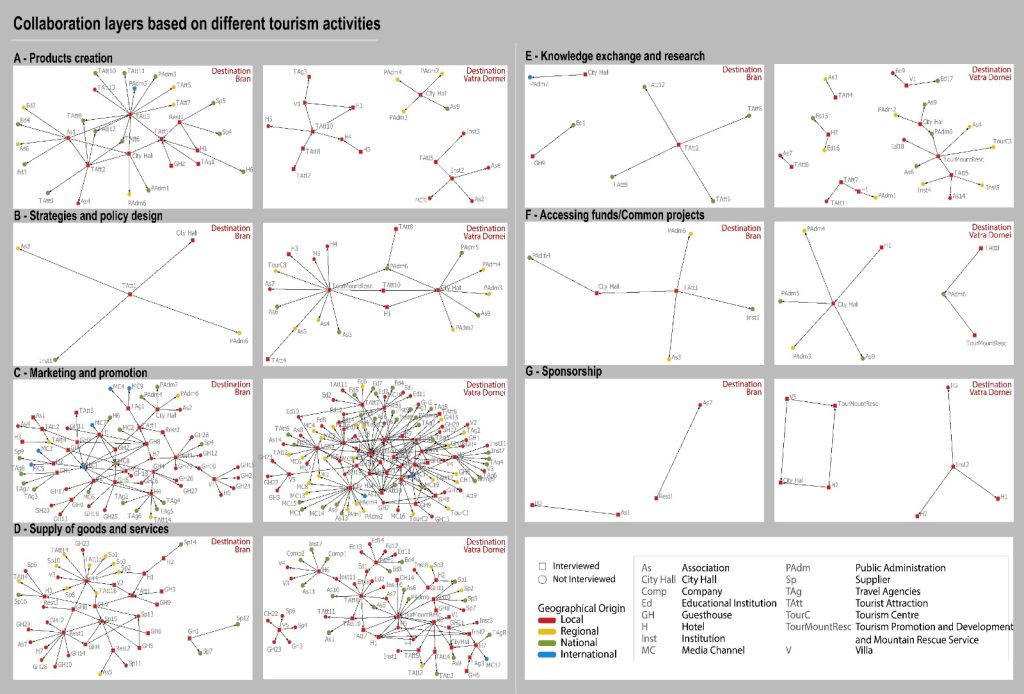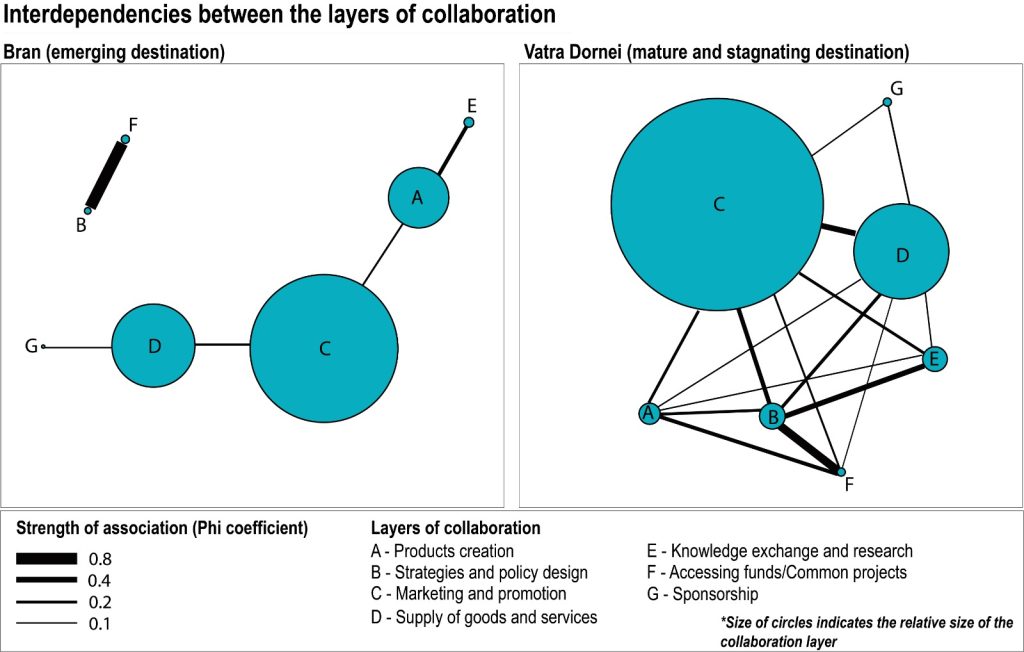
by: Alexandra Cehan, Mihail Eva, Corneliu Iatu. Journal of Hospitality and Tourism Management, https://www.sciencedirect.com/science/article/pii/S1447677021000073
Context and purpose
Tourism, as a system, is dependent on collaboration between stakeholders, in order to ensure the development of a destination as a whole and also benefit for each individual stakeholder. This fact triggered a growing interest in understanding tourism collaboration, which has led to a considerable diversification of conceptual and methodological approaches. One emerging and promising area of inquiry consist in approaching tourism collaboration from the perspective of multilayer networks (Baggio, 2017), a concept also known as “network of networks” in network science (Kivela et al., 2014).
However, very few papers have inquired the structure of tourism collaboration networks from a multilayer perspective and none of them systematically inquired about both structural variations from one collaboration layer to another and interdependencies that might exist between collaboration layers. The current research has aimed precisely at filling this gap by methodologically combining Social Network Analysis (SNA) with nonparametric statistical analysis, and by taking as case studies two Romanian destinations: an emerging one (Bran), and a stagnating one (Vatra Dornei).
Methodological approach and results
Data used in this paper has been collected through semi-structured interviews with 47 stakeholders from the two destinations. The focus of the interviews was on identifying all relationships of each interviewed stakeholder, along with important information related to the collaborator and the purpose of collaboration. The analysis has been conducted in two steps, with two corresponding sets of results.
First, SNA allowed for a thorough investigation of each sub-network identified based on 7 different purposes of collaboration. For this, the sociogram for each sub-network was created and several metrics were calculated. Important differences between the layers were identified in this stage: largest and densest sub-networks are those for marketing and for the supply of goods and services while accessing funds or sponsorships barely create network structures.
Second, the associations between the 7 sub-networks in each destination have been identified through multiple correspondence analyses. The most important result is that some interdependencies between layers of collaboration are common for both destinations, despite one being an emergent destination and the other a stagnating one. More precisely, results suggest significant interdependencies between the following pairs of activities: (1) policy design and accessing funds and (2) products creation and knowledge exchange and research.


Originality
This paper contributes to the literature by operationalizing the concept of multilayer networks in tourism studies and by delivering one of the first systematic analyses in tourism of interdependencies between different layers of collaboration. It also draws attention to the potential that the multilayer network approach has for providing important knowledge on stakeholders’ collaboration and calls for more analyses from such a perspective.
References
Baggio, R. (2017). Network science and tourism – the state of the art. Tourism Review, 72(1), 120-131.
Kivela, M., Arenas, A., Barthelemy, M., Gleeson, J.P., Moreno, Y., & Porter, M.A. (2014). Multilayer networks. Journal of Complex Networks, 2, 203-271.